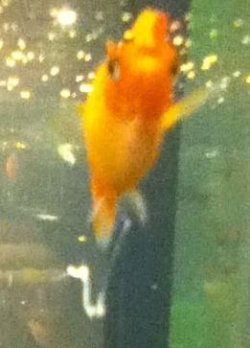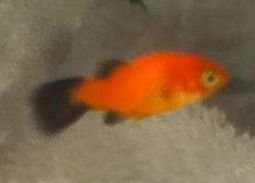raindropsfly
New Member
- Joined
- Apr 30, 2011
- Messages
- 5
- Reaction score
- 0
My platies and molly fry have been suffering from all of these symptoms for months now. I have tried and failed at curing whatever they have. Here is some information.
Finally All of the Symptoms and Signs.
Loss of appetite
Progressive thinness
Sluggish movement
Clamped fins
Skeletal deformity
- spine curved upwards and one that has it curved to the side.
A little red around gills
Scales loosening and falling out
Stringy Poop
Random white Spots that appear and disappear
Thinness of Body
Flicking ( rubbing against objects )
Constantly getting stuck to filter…
I Have done 25% water changes every 2 weeks for each tank.
I do not have the proper tools to test my water.
I add the proper amount of aquarium salt to the tank when needed.
I have tried giving salt baths, but seems to not work.
I have also tried melafix and primafix, and Fish Ich Cure, all have no improvement.
I clean the filters once a month.
From what I’v researched I think it could be Fish TB, but I want to be positive with you guys. On the other hand, I would rather euthanize my fish instead of months of treatment.
If any advice please help. Thanks!

Finally All of the Symptoms and Signs.
Loss of appetite
Progressive thinness
Sluggish movement
Clamped fins
Skeletal deformity
- spine curved upwards and one that has it curved to the side.
A little red around gills
Scales loosening and falling out
Stringy Poop
Random white Spots that appear and disappear
Thinness of Body
Flicking ( rubbing against objects )
Constantly getting stuck to filter…
I Have done 25% water changes every 2 weeks for each tank.
I do not have the proper tools to test my water.
I add the proper amount of aquarium salt to the tank when needed.
I have tried giving salt baths, but seems to not work.
I have also tried melafix and primafix, and Fish Ich Cure, all have no improvement.
I clean the filters once a month.
From what I’v researched I think it could be Fish TB, but I want to be positive with you guys. On the other hand, I would rather euthanize my fish instead of months of treatment.
If any advice please help. Thanks!




 I personally never use soap on any of my fish equipment, just to be safe.
I personally never use soap on any of my fish equipment, just to be safe.